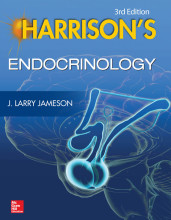Summary: Running-Induced Systemic Cathepsin B Secretion Is Associated With Memory Function
- This + 400k other summaries
- A unique study and practice tool
- Never study anything twice again
- Get the grades you hope for
- 100% sure, 100% understanding
Read the summary and the most important questions on Running-induced systemic Cathepsin B secretion Is Associated with Memory function
-
1 Summary
-
What is Cathepsin B?
It is a protein, secreted after endurance muscle activity, that may be important in the cognitive and neurogenic effects of Running. -
Which downstream pathway seems to be involved in CTSB secretion?
The AMPK pathway, which is induced after endurance exercise. -
What was the effect of CTSB on adult hippocampal progenitor cells in vitro?
- Enhanced BDNF expression
- Enhanced DCX expression
-
2 Introduction
-
What are the thought effects of exercise on (human) brain function?
- improved cognition in humans
- enhance neurotrophic factor expression
- increased vascularisation
- improved memory and neurogenesis in the hippocampus
-
Name some peripheral factors linked to running that may positively influence brain function.
- Blood factors from young animals enhance brain plasticity in older animals (Katsimpardi et al., 2014)
- myokines derived from muscles may influence neural pasticity (PGC1a -> FNDC5 -> irisin -> enhanced hippocampal BDNF; Wrann, 2015)
-
What are investigated myokines named in this study?
- Cathepsin B
- Irisin
-
What did the authors investigate?
Proteomics analyses of cultured medium in AMPK stimulated myoblasts. They became particulary interesting in Cathepsin C as it may play an important role in the effects of exercise on Human Brain. -
3 Results
-
3.1 Identification and Validation of Candidates
This is a preview. There are 1 more flashcards available for chapter 3.1
Show more cards here -
Which myokine did they choose to investigate after proteomics analysis?
Cathepsin B (CTSB) -
3.2 Validation of CTSB expression after exercise
-
How was the expression of CTSB by myoblasts validated?
- after 8 days of differentiation the cells were starved for 3 hrs by serum free media.
- AICAR (AMPK agonist) or vehicle was added for different durations, increasing gene expression in the 3hrs.
- extracellular protein levels were increased in differentiated L6 myoblasts
- running mice (14 and 30 days) had increasing blood CTSB
- CTSB expression and secretion in running mice was only found in skeletal muscle (fast twitch)
-
On which levels of action did the authors validate the myokine CTSB?
- Induction by substance
- Gene expression (both vivo and vitro)
- Protein expression (both vitro and vivo)
- Time duration
- Location of secretion
- Higher grades + faster learning
- Never study anything twice
- 100% sure, 100% understanding
































